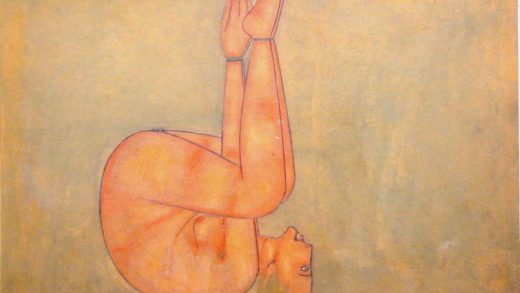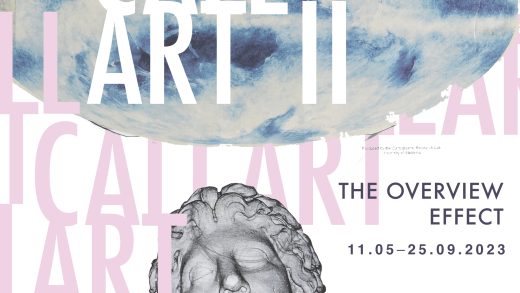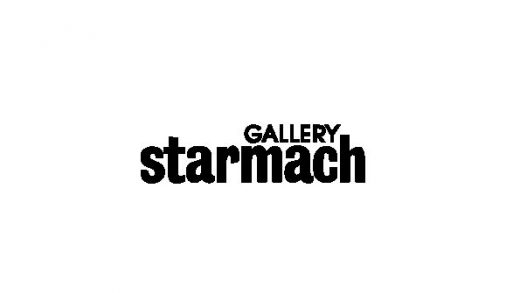Izabella Gustowska, Zofia Kulik / KwieKulik, Anna Kutera, Natalia LL, Jolanta Marcolla, Teresa Murak, Ewa Partum, Maria Pinińska-Bereś, Teresa Tyszkiewicz
opening: 23.06.2017 at 7:00 PM
exhibition open until September 29th, 2017
opening hours: Mon-Fri 10 a.m. – 6 p.m.
free entry
organizers:
Galeria Piekary
ul. Św. Marcin 80/82, Poznań
CK Zamek, Dziedziniec Różany


The exhibition Lady in the Mirror. Artistic Strategies of Women in the 1970s features works by Izabella Gustowska, Zofia Kulik, Anna Kutera, Natalia LL, Teresa Murak, Jolanta Marcolli, Ewa Partum, Maria Pinińska-Bereś and Teresa Tyszkiewicz. Their oeuvre is not only a manifestation of women’s art and early feminism; above all, it corresponds and coincides with the second avant-garde (neo-avant-garde), a current which predominated in Polish art in the 1970s and in the early 1980s, emanating from its chief hub in Wrocław. Importantly enough, that was a period of extraordinary plurality of approaches and artistic gestures which –at least in Poland – were utterly unprecedented. The works displayed at the exhibition are more than a cogent proof that this was so.
Lady in the Mirror (in Polish translation) is a title of a collection of short stories by Virginia Woolf, English writer and feminist, eponymous with one of the stories it contained. The latter is a study of the mental and physical make-up of a certain Isabella Tyson, whom the narrator seeks to discover and penetrate into through a first person interior monologue, so characteristic of the author. For that end, the narrator uses a mirror which in this story is as dangerous as it is alluring. Inanimate objects are arrested, frozen in the mirror and gain immortality while the human figure is bared, with the most secret depths of the soul exposed. Ultimately, as Woolf writes, in the looking-glass everything is invested with a new reality and significance…
This is also how we wish to approach the oeuvre presented at the exhibition, works of nine Polish female artists, created mainly in the 1970s. All those women take a look at themselves in the mirror. The motif may but does not have to be literally there; sometimes it is the lens of a photographic or film camera which facilitates that self-scrutiny, that seeing oneself in a new light in apparently more objective manner. The eye of the camera is like a mirror – it records what it sees, though the emerging picture is fraught with danger as it makes reality yield what tends to be invisible to the naked eye (Slavoj Žižek writes that in order for us to perceive the object clearly, it must be frozen, immobilized – immobility makes a thing visible). Still, it is so very attractive at the same time – the images thus formed and released become unreal, derealized.
However, on other occasions that looking-glass turns other people and our surroundings into a mirror. Woolf would describe the palpable environment in great detail: the nature, the interiors, the objects. Perhaps women attach much more attention to what is around them, perhaps they more often commune among and with all kinds of household objects and therefore sense and feel them all the more deeply? This may also be why, unsecure as they are, they compare themselves with others. In this case, twinship is something of a phenomenon.
Finally, there is Lacan’s mirror through which our identity is constituted. The moment of the female experience of oneself, occurring precisely as one looks into the mirror does not have to be construed as an expression of vanity. After all, it is extensively exploited by male artists and often possesses an erotic, corporeal dimension. Moreover, Lacan believed that self-discovery through a mirror enables consolidation of the self within the bounds of a particular notion. The oeuvre of Polish female artists which the viewer is invited to look at is also a record of the varied attempts at redefining the concept of women as such, of the role they are to play in a community and the aspirations they are attributed. Just as in Woolf’s short stories, the notion of a lady is problematized, while the semantic import and weight of that word is in some instances laid bare and confronted with reality; elsewhere it is merely accentuated in a vague and implicit manner.



